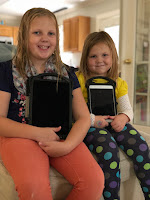Recently most of the world has become familiar with the term “fake news.” These alternative facts are pervasive and infect all facets of our lives. From our twitter streams to talking heads on television it seems like we can not escape facts being outright fake, or the perception that they are. What’s worse is most students can’t determine whether what they see or read is real or fake.
We can’t blame those that create the facts.
We can’t blame the media that reports them.
We can’t blame social media or the tools used to access them.
We have to blame ourselves.
Social media didn’t create fake facts and the media didn’t invent fake news. Our lack of understanding of the power and reach of all of these is at the root of the problem here. Social media has long been the scapegoat for adults to blame the ills of kids and students on. Kids can’t focus because of social media. Kids stare endlessly at their devices because all they care about is their social status. Kids today won’t know how to engage and communicate because they only can talk in 140 character chunks or 7 seconds of video.
It’s clear social media has the power to engage students in ways adults do not understand. My 8 yr old daughter can watch kids her age go to the water park or visit Disney World for what seems like hours. And she can comment and engage on what seems like something so mundane and useless.
But to her it matters.
And because it matters to them, it should matter to us.
Social media must be embraced by educators and used in the classroom so we aren’t raising a society of users that doesn’t understand the power, potential and reach it has to both be a positive driving force for change and a technology that can divide and change fundamentally who we are. Moreover educators and adults must be fluent in the language of fake news and alternative facts so that our students understand and are aware of what lurks in their streams and posts.
It’s because of the engagement my daughter has with video and other kids have with other social media and most adults lack of understanding why they do what they do with social media we must redouble our efforts to be better knowers of all aspects of digital literacy. We can no longer blame the technology. Just because we don’t know how to use it doesn’t make it bad. All educators and adults need serious help in being digitally literate and identifying fake news and alternative facts.
So let’s stop blaming social media and fake news and alternative facts. Let’s instead work to better understand for ourselves how to spot what’s real and what’s not so that when students come in the classroom and we empower them to use social media to connect, they are being empowered by an adult who understands the power of social media but also helps them distinguish the real from the fake.
We can’t blame those that create the facts.
We can’t blame the media that reports them.
We can’t blame social media or the tools used to access them.
We have to blame ourselves.
Social media didn’t create fake facts and the media didn’t invent fake news. Our lack of understanding of the power and reach of all of these is at the root of the problem here. Social media has long been the scapegoat for adults to blame the ills of kids and students on. Kids can’t focus because of social media. Kids stare endlessly at their devices because all they care about is their social status. Kids today won’t know how to engage and communicate because they only can talk in 140 character chunks or 7 seconds of video.
It’s clear social media has the power to engage students in ways adults do not understand. My 8 yr old daughter can watch kids her age go to the water park or visit Disney World for what seems like hours. And she can comment and engage on what seems like something so mundane and useless.
But to her it matters.
And because it matters to them, it should matter to us.
Social media must be embraced by educators and used in the classroom so we aren’t raising a society of users that doesn’t understand the power, potential and reach it has to both be a positive driving force for change and a technology that can divide and change fundamentally who we are. Moreover educators and adults must be fluent in the language of fake news and alternative facts so that our students understand and are aware of what lurks in their streams and posts.
It’s because of the engagement my daughter has with video and other kids have with other social media and most adults lack of understanding why they do what they do with social media we must redouble our efforts to be better knowers of all aspects of digital literacy. We can no longer blame the technology. Just because we don’t know how to use it doesn’t make it bad. All educators and adults need serious help in being digitally literate and identifying fake news and alternative facts.
So let’s stop blaming social media and fake news and alternative facts. Let’s instead work to better understand for ourselves how to spot what’s real and what’s not so that when students come in the classroom and we empower them to use social media to connect, they are being empowered by an adult who understands the power of social media but also helps them distinguish the real from the fake.
Resources






